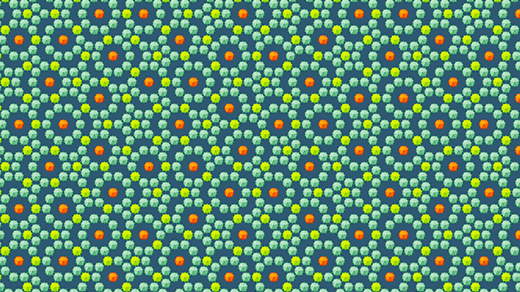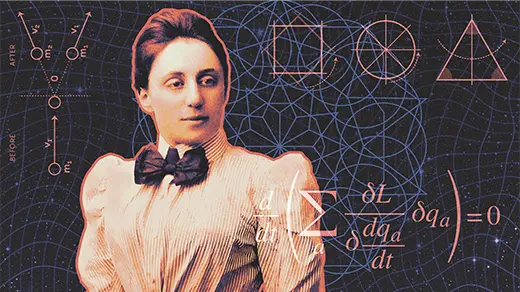What's up in
Symmetry
Latest Articles
What Are Lie Groups?
By combining the language of groups with that of geometry and linear algebra, Marius Sophus Lie created one of math’s most powerful tools.
Quasicrystals Spill Secrets of Their Formation
New studies of the ‘platypus of materials’ help explain how their atoms arrange themselves into orderly, but nonrepeating, patterns.
How the Universe Differs From Its Mirror Image
From living matter to molecules to elementary particles, the world is made of “chiral” objects that differ from their reflected forms.
After 20 Years, Math Couple Solves Major Group Theory Problem
Britta Späth has dedicated her career to proving a single, central conjecture. She’s finally succeeded, alongside her partner, Marc Cabanes.
How Noether’s Theorem Revolutionized Physics
Emmy Noether showed that fundamental physical laws are just a consequence of simple symmetries. A century later, her insights continue to shape physics.
Mathematicians Discover New Way for Spheres to ‘Kiss’
A new proof marks the first progress in decades on important cases of the so-called kissing problem. Getting there meant doing away with traditional approaches.
Mathematicians Discover New Shapes to Solve Decades-Old Geometry Problem
Mathematicians have long wondered how “shapes of constant width” behave in higher dimensions. A surprisingly simple construction has given them an answer.
‘Groups’ Underpin Modern Math. Here’s How They Work.
What do the integers have in common with the symmetries of a triangle? In the 19th century, mathematicians invented groups as an answer to this question.
What Can Tiling Patterns Teach Us?
If you cover a surface with tiles, repetitive patterns always emerge — or do they? In this week’s episode, mathematician Natalie Priebe Frank and co-host Janna Levin discuss how recent breakthroughs in tiling can unlock structural secrets in the natural world.








